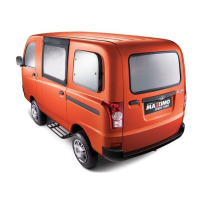It may be necessary to remove the disabled vehicle’s battery cables from
the battery terminals and clean both cables and terminals. Use a stiff
wire brush to remove all corrosion. Reconnect the cables to the battery
terminals and jump the car.
3. Untangle and unwind your jumper cables. Like your batteries, your jumper
cables will probably have red and black cables and will have heavy duty clamps
to connect to the battery terminals. You must make sure that the red and
black ends of your jumper cables never touch each other once they are
connected to the batteries; permitting them to do so can result in serious
arcing and/or damage to one or both vehicles
4. Connect the jumper cables in the order described below;
• Connect one red clamp to the positive (+) terminal of the dead battery/
disabled vehicle
• Connect the other red clamp to the positive (+) terminal of the good battery
• Connect one black clamp to the negative (-) terminal of the good battery
• Connect the other black clamp to a piece of grounded metal on the dead
vehicle, preferably shiny metal (not painted or oily) that is attached to the
engine. Usually a nut, bolt or other protruding shiny metal will work. You
may see a small spark when you connect to a good ground. As a last
resort, you may connect to the negative (-) post of the dead battery, but this
risks igniting hydrogen gas coming off the battery
Make sure none of the cables are dangling into the engine compartment,
where they could be exposed to moving parts.
5. Start the working car. Let it idle for a few minutes. Rev the engine a little above
idle for 30 to 60 seconds. You do this to charge the battery in the dead car. A
good clean connection between the battery cables and the battery terminals
is essential
EMERGENCIES

